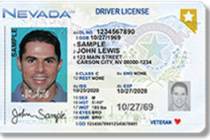Trick-or-treat tips for drivers, parents
Judy is 8 years old and dressed from tiara to tiptoe in princess pink. She's skip-along happy as she holds onto Daddy's hand, moving from house to house, filling her tiny pumpkin bucket with candy.
Jake is 12 and much too old, he pleads, to have parental accompaniment. Besides, dressed in grungy, torn clothes and sporting painted scars and fake blood, he's part of a zombie apocalypse that will swarm not just one neighborhood but several as he and his "Walking Dead" buddies try to fill their pillowcases with as much goodies as they'll hold.
"You guys won't be able to keep up with us, anyhow," he tells his parents, who grudgingly acknowledge they can't hold his hand - literally or figuratively - forever.
It's Halloween dusk. Feel free to change the names and costumes to fit your child or children as needed. They will be part of an estimated 41 million children nationally between the ages of 5 and 14 who will be crisscrossing roads and streets, avenues and boulevards as adults are heading home Wednesday or shuttling their own children from neighborhood to neighborhood for trick-or-treating.
Will you think to talk to your kids about traffic safety?
Sure, you'll fuss over their costumes. You'll stress the importance of seeing their candy first before they dive in. You'll warn them not to approach unlit houses or talk to strangers.
But will you warn them about looking both ways when they cross the street? About using crosswalks when possible? About not darting between parked cars? About not texting or talking on the phone while they walk?
Well, you still have four days. Don't waste the opportunity.
"We know a good number of parents don't have this conversation with their kids, but we want more parents talking to their kids about walking safely on Halloween," said Kate Carr, president and CEO of the Washington, D.C.-based Safe Kids Worldwide, a network of organizations worldwide dedicated to preventing unintentional childhood injury.
Last year, children and teenagers trick-or-treating or heading to Halloween parties were injured or killed by drivers in Colorado, New Jersey, Pennsylvania, Texas, Utah and, hitting right at home, Las Vegas.
Faith Love, a 12-year-old seventh-grader at Rogich Middle School, was struck and killed by a drunken driver who was speeding through the Summerlin neighborhood where she was trick-or-treating.
Faith was doing nothing wrong that night, simply enjoying the holiday with friends.
While the Metropolitan Police Department and Nevada Highway Patrol will establish DUI checkpoints around the valley Wednesday night to catch the impaired, it's up to parents to compel their children, especially those trick-or-treating without adult supervision, to play it safe.
And it's also up to drivers to be ultra-cautious on a night that distinctly belongs to children.
"Pedestrians have to watch out for vehicles, and the drivers of those vehicles have to watch out for pedestrians. It can't be any more simple than that," said officer Bill Cassell, a Police Department spokesman.
Still, Cassell and Carr stress things that parents can do or say to help ensure their children's Halloween safety:
■ Accompany any child up to the minimum age of 10, firmly holding the hand of younger ones to prevent them from breaking away and running into a street. Carr says parents need to determine how young an unaccompanied trick-or-treater can be based on the child's maturity and ability to understand and follow parental guidelines.
■ Have children carry a flashlight, glow stick or some other form of light that will help make them visible to drivers. Cassell explains that glow sticks can be attached to the backs of costumes, or parents can add reflective tape so drivers can see trick-or-treaters as they are going as well as when they are coming. Avoid dark-colored costumes, if possible.
■ Talk to children about the importance of using crosswalks . If there are no crosswalks, or if your children are trick-or-treating in a residential neighborhood, tell them to cross at an intersection and not indiscriminately run back and forth across streets, especially running between parked cars. Advise children to stop at the curb and look left, right and then left again before crossing.
■ Advise children to walk on sidewalks when possible, and do so facing traffic so that drivers can better gauge their movement.
■ Stress the importance of not texting or talking on the phone while walking. A distracted child is a child courting danger, Carr says: "If a child must text or use his or her phone, or wants to take a phone-picture of a friend in costume, do that in a well-lit area, such as on someone's porch or at the front door."
Drivers also must do their part to make sure trick-or-treaters remain safe, Carr and Cassell say. Turning on one's headlights a little earlier than usual is beneficial, and driving slower is important. Simply, it comes down to being more vigilant.
"We were all trick-or-treaters ourselves at one point," Cassell said. "Remember some of the things we did as kids and realize that kids still do those things.
"Keep your eyes open and pay attention. That's the best advice."
Questions and comments should be sent to roadwarrior@reviewjournal.com. Please include your phone number. Follow the Road Warrior on Twitter: @RJroadwarrior.
■ Closure of Buffalo Drive, between Russell Road and Patrick Lane, from 9 p.m. today through Dec. 24 for construction of an enclosed flood-control channel.
■ Southbound U.S. Highway 95, from Centennial Parkway to the north Rancho Drive flyover, reduced to one lane from 9:30 a.m. to 6 p.m. Monday and Tuesday for open grade work.
■ Closure of the intersection of Nellis Boulevard and Desert Inn Road from 9 p.m. Friday through 5 a.m. Nov. 5 as Water Reclamation District crews replace sewer lines and manholes. Various lane closures around the intersection starting Monday through the project's completion.
■ Closure of Clark Avenue, between Las Vegas Boulevard and Sixth Street, through Friday for water and sewer work.
■ Disruptions on Buffalo Drive, between Lake Mead and Charleston boulevards, through Wednesday for road improvements.
■ Lane closures on Shadow Lane, between Alta Drive and Charleston Boulevard, through Wednesday for utility work.
■ Night lane restrictions on northbound Nellis Boulevard, between Tropicana Avenue and Flamingo Road, through Nov. 9 for a Water Reclamation District survey.
■ Night lane restrictions on eastbound Sunset Road, between Eastern Avenue and McLeod Drive, through Nov. 9 for a Water Reclamation District survey.
■ Lane closures through Nov. 16 on Lamb Boulevard, from Oquendo Road to Hacienda Avenue; on Nellis Boulevard, from Hacienda Avenue to Flamingo Road, and on Hacienda Avenue, from Lamb Boulevard to Grapevine Springs Park, for a Water Reclamation District survey.
■ Night lane closures on Sunset Road, from Eastern Avenue to McLeod Drive, through Nov. 16 for a Water Reclamation District survey.
■ Night lane closures on Warm Springs Road, between Tamarus Street and Eastern Avenue, through Nov. 16 for a Water Reclamation District survey.
■ Lane closures on Paradise Road, from Royal Moon Avenue to Robindale Road, through Nov. 23 for a Water Reclamation District survey.
■ Lane closures on McLeod Drive, from Sunset Road to Patrick Lane, through Nov. 23 for a Water Reclamation District survey.
■ Lane restrictions in both directions of Decatur Boulevard, between Lake Mead Boulevard and Rancho Drive, through Nov. 30 for paving and median island improvements.
■ Detour of eastbound traffic on Sahara Avenue at Boulder Highway through March for storm drain construction.
■ Delays on Jones Boulevard from U.S. Highway 95 to Sahara Avenue for widening.
GASOLINE PRICES
The average price of gasoline Friday in the Las Vegas Valley was $3.77 per gallon; the state average was $3.85; the national average was $3.58.
LAS VEGAS REVIEW-JOURNAL

















